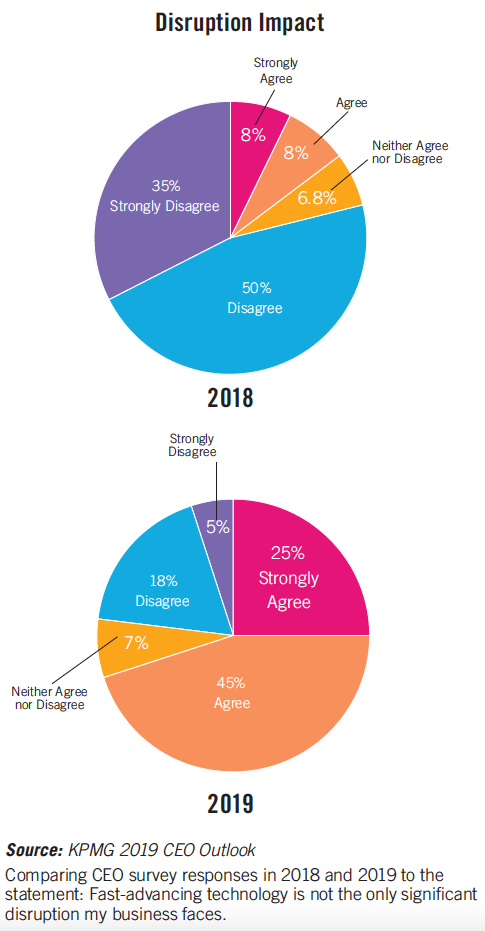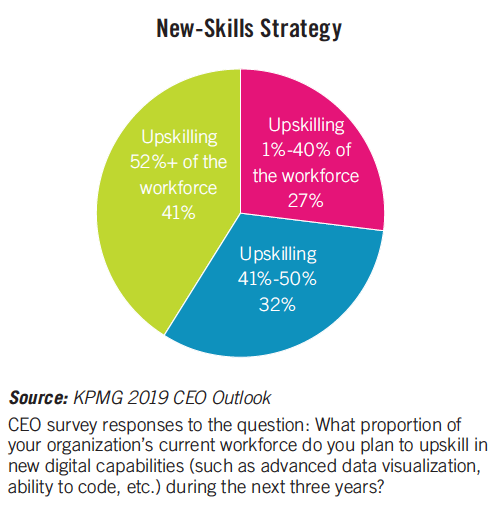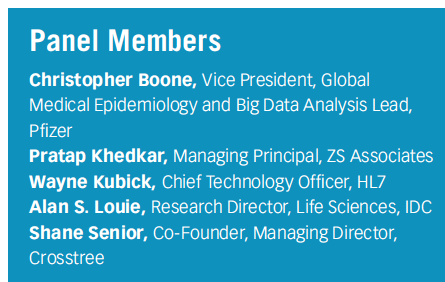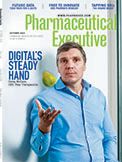Tech Tour for the C-Suite: Pharma’s Digital Future
Pharmaceutical Executive
Amid new findings on today’s C-suite mood and approach to digital transformation, experts-in a panel discussion and wider examinations by Pharm Exec editors-explore the intersection of data and technology and the areas that must evolve to meet the digital health demands of tomorrow.
Justin Hoss, KPMG life sciences technology leader, is frustrated. The life sciences CEOs his company surveyed about digital transformation and technology are, too, frustrated. Experts from Pharm Exec’s technology panel describe a complex industry with complex regulatory requirements, interwoven into operating models that beg to be broken. But the good news is, it can only go up from here. Nevertheless, let’s look at KPMG’s data and discuss the roots of C-suite frustration. First off, Exhibit A, the comparison

pie chart of 2018 to 2019 at left.
To Hoss, last year’s survey showed the optimism among life sciences executives in regard to their investments and returns for digital transformation, artificial intelligence (AI), automation, and all the digital buckets. But this year, the optimism has been tempered. Hoss uses a very clear analogy for frustration: his own child building with Legos. “You build it, in this case, you apply the technologies to an existing area where you see inefficiencies, and you want results,” he says. “But the root cause isn’t the technologies, it’s the need to look at your enterprise a whole new way.” Instead of kicking the blocks to the curb, say ending a pilot that didn’t show immediate results, it’s developing a new understanding of how technology fundamentally reinvents the way business is conducted, and, therefore, the C-suite has to get its arms around that.
To be equally fair, the amount of time that goes into implementing a new way of process is not insignificant. At this year’s Veeva Systems R&D Summit, where users of the company’s various cloud-based solutions shared their implementation and use-case experiences, it’s clear that technology is meant to change the way people have traditionally done their work. In many of these particular cases, people went from paper to digital, but in others they took the interim “electronic” step, paper-to-paper process on a computer. The need to think digitally is not a technology problem, it’s a fundamental shift. That is lost on many without intensive training and built-in governance.
The industry experts interviewed for seperate break-out articles this month by Pharm Exec editors aren’t as

frustrated as the KPMG data might reflect, and even see cause for optimism in regard to infrastructure and data sourcing. However, it is clear from our reporting that pharma needs to get in on its digital transformation now as a competitive advantage. A wait-and-see attitude could end up leaving those late adopters behind in the skills and operating model shifts that need to happen.
Interestingly, the survey drills into some of the digital skill sets needed for pharma’s future, asking questions not included in 2018 (see example in above chart; click to enlarge).
The expert touch
To take a step back and examine why CEOs are frustrated, as well as make sense of what the C-suite needs to know about technology and the AI “revolution” in the industry, Pharm Exec convened a group of experts to drill down into some of the core areas where new technologies are poised to reinvigorate and reinvent the way they are approached and managed; discuss the kind of technologies that are at hand to support these changes; and

identify the conceptual issues that pharma leaders will face as they head into this future world.
A consensus eventually emerged around the following areas: what is needed to get data into shape (and who owns it); pharma’s role in owning their stake in value- and outcomes-based contracts; the harmonization and use of patient data; and how the C-suite can position itself internally to use data effectively.
One salient issue that rose from the panel discussions was how to position areas such as AI and real-world evidence (RWE) as standalone technological “solutions” within the future-of-pharma outlook. Panel member Christopher Boone saw RWE as “more of a catalyst function.” It’s what you need to “get thing awareness, and to identify certain use cases throughout the organization,” says Boone. Ultimately, “there will be no point in having a separate,
Snapshots: AI, Manufacturing; click to enlarge

isolated, centralized RWE group that is primarily focused on education,
but we will need to better integrate the function into the business and research units,” he adds.
Instead, RWE is enabling data that will support decisions in personalized precision medicine, value-based contracting, and clinical protocol and guideline development. Pratap Khedkar agreed that “the technology, the data, the analytics, the process are not distinct things; modern technology is bringing them together.” New technology should serve to enable pharma leaders to make decisions in a different way, and at a much more granular level. “The promise of technology is that you do things very differently, not just faster,” says Khedkar.

Is Artificial Intelligence a ‘Product’? Products Liability Implications for AI-Based Products
April 10th 2025As the physical products we use evolve to become increasingly complex, traditional products liability frameworks may not always fit to provide remedies for harm that can result from using novel product types.